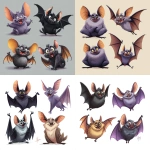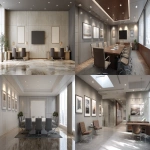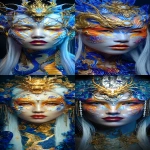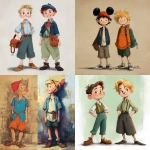Explore the Best AI Image Gallery

The Canvas of Tomorrow: Wearable Tech and the Evolution of Creativity
The line between the physical and digital realms is blurring at an unprecedented pace, fueled by advancements in wearable technology. This evolution is reshaping the creative landscape, offering artists, designers, and innovators a new set of tools to express themselves and engage with audiences in innovative ways.
Wearable tech, encompassing everything from smart glasses and augmented reality (AR) headsets to haptic gloves and motion-capture suits, empowers creators to transcend traditional limitations.
Redefining Artistic Expression
Artists are utilizing wearable tech to experiment with immersive experiences and interactive installations. Imagine stepping into a world where your movements influence the artwork around you, or where your heartbeat triggers a symphony of sound and light. Wearable sensors can capture physiological data like heart rate, brainwaves, and even eye movement, translating these signals into artistic expressions. This opens up a realm of possibilities for personalized, emotionally resonant art that reacts to the viewers presence.
Augmenting Design Processes
The design industry is also embracing wearable tech to enhance its workflows. Designers can use AR glasses to visualize their creations in 3D space before they are physically built, allowing for real-time adjustments and refinements. Haptic feedback devices can provide designers with a tactile sense of the materials they are working with, enhancing their understanding of form and texture. This seamless integration of technology into design processes fosters greater efficiency and innovation.
Empowering Collaboration
Wearable tech has the potential to bridge geographical distances and foster collaboration among creatives. Imagine a team of designers scattered across continents, yet able to work together in real-time on a shared virtual canvas. Through AR headsets or collaborative platforms powered by wearable sensors, they can see each others designs, provide feedback, and iterate on their creations seamlessly. This fosters a sense of unity and shared purpose, regardless of physical location.
Navigating Ethical Considerations
While the potential benefits of wearable tech in the creative industry are vast, it is essential to address the accompanying ethical considerations. Data privacy is paramount; creators must be transparent about the data collected by wearables and ensure its responsible use. Bias in algorithms used to generate creative content needs to be carefully addressed to prevent the reinforcement of harmful stereotypes. Moreover, access to these technologies should be equitable, ensuring that all creatives, regardless of their background or resources, have the opportunity to participate in this evolving landscape.
Future Trends: A Glimpse Ahead
The future of wearable tech in the creative industry promises even more exciting possibilities. We can expect:
- More immersive and interactive experiences: AR and VR technologies will continue to evolve, blurring the lines between the physical and digital worlds even further.
- Personalized creativity: Wearable sensors will enable personalized artistic expressions tailored to individual preferences and emotions.
- Seamless integration with existing tools: Wearable tech will seamlessly integrate with traditional creative software and hardware, enhancing workflows and expanding creative possibilities.
- A new generation of creators: Emerging technologies will empower a new generation of creatives who are fluent in both the physical and digital realms.
As wearable technology continues to evolve, it has the power to democratize creativity, making artistic expression more accessible and empowering individuals to push the boundaries of imagination. By embracing this transformative technology responsibly, we can shape a future where the canvas of tomorrow is limitless.




](https://images.ai-img.art/thumbnails/150/8d1fe5a7a49cfc96747182431a853357913286d89258383caab2d3b4681afcb5.webp)












](https://images.ai-img.art/thumbnails/150/2fbd98ecfc425cfc1597779121e1c0305437067779e9c471eb64ff9615d5be98.webp)















](https://images.ai-img.art/thumbnails/150/5197af8969d850e2a43e141d41e482ccbceedebceb2a4caf9f098f943f9d1b0f.webp)

](https://images.ai-img.art/thumbnails/150/269414b0e541026702e9e67c67602c96162f37ff460a388b3b36314c8fc936dd.webp)
](https://images.ai-img.art/thumbnails/150/485c8b1c747827bdc9a962f8a1919b3c259b18dd263b260208a1eae19fb85e07.webp)


](https://images.ai-img.art/thumbnails/150/3020b8c2b6d9be07e042357107af1de10deb274a41d2b0f332684ad4b532a702.webp)









